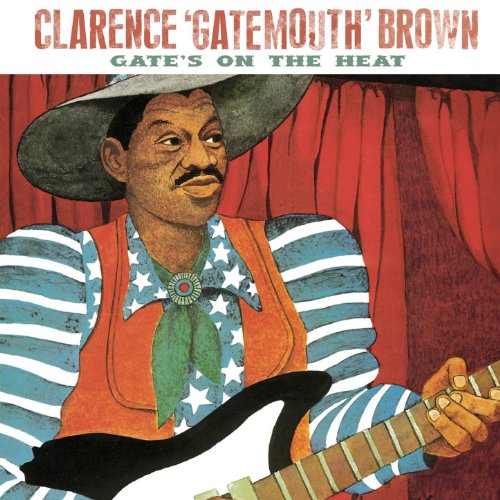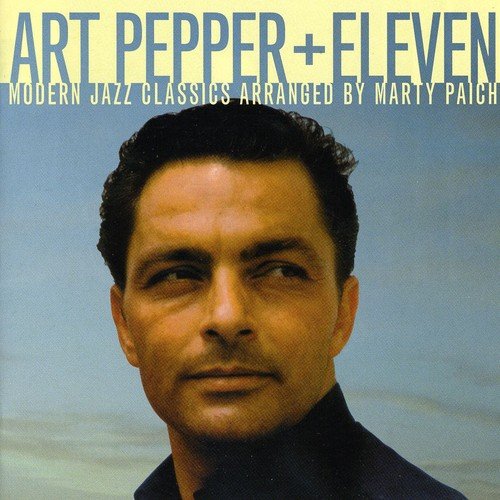What are you listening to and WHY might anyone be interested? (Vol. XIV)
Posted by: Richard Dane on 31 December 2017
On the eve of a new year, it's time for a new thread.
Last year's thread can be found here:
Tony2011 posted:
2000 - CD (rip)...
Good idea Tony - i think i'll join you.


Great album of the Neil Crowley trio...
More funk classics on double vinyl:


1991 - CD (rip)...
Now Playing......
Eberhard Weber - Little Movements
Eberhard Weber (bass), Charlie Mariano (soprano saxophone, flute), Rainer Bruninghaus (piano, synthesizer), and John Marshall (drums).
Streaming on NAS.......... Continuing on with Eberhard's music........
Review from ECM Reviews found here:
The vast drone of “The Last Stage Of A Long Journey” cuts a thick line below the Steve Kuhn-esque intro. Like the silent monolith of 2001: A Space Odyssey, it mystifies as it enlightens. Saxophonic clusters punctuate a deep recurring thrum. Brüninghaus introduces a plaintive ostinato behind Weber’s crisp solo over brushed drums. Every gesture therein lifts us into cloudier airspace. “Bali” gives us more drone, until Marshall and Weber lock us into a solid trek to outlying territories. Like a train through the mountains that suddenly part to reveal a lively village, it shows passengers an idyllic vision of life on the margins. The piano keeps us moving forward, however, so that we only get a glimpse. Weber provides the coal, while Mariano lights a fire to feed it. A beautiful arpeggiator opens the door on a transcendent detour before bringing us back on track. The energy and motivic clarity remind one instantly of Steve Reich’s Tehillim. Next, Colours weaves “A Dark Spell” over us. Over a distant cascade of piano, bass and sax congregate in thematic clusters. Mariano outdoes himself, performing back flips in the sky as our speed increases in the last stretch. Engaging harmonies between bass and sax offer an incredible display of dynamic control that recedes like a classical riff. The title track begins with a repeated motif on piano as random sounds—accordion, gongs, and breaking glass—populate the background. From this, we get a thematic highlighting by Mariano against Weber’s delightful counterpart. The smooth and easy ending sweeps up any remaining debris with every repetition. “‘No Trees?’ He Said” is a straightforward track that appears smooth from every angle. From its tight rhythm to its reed doublings, this is simply stunning music. There is nothing little about these movements.
Though palpable in every amplified note, Weber’s legacy is about more than just assembling a handful of incredibly talented beads and threading them with smooth production. “Telepathic” is hardly the word to describe the sound of Colours, but it steers us in the right direction. The music in this set remains untouched, a sign of its far-reaching clarity of purpose. It is chaos theory epitomized in sound: every note goes where it must, never to be repeated. Weber’s music not only soars, it transcends the atmosphere. I like to think that, somewhere, an extra-terrestrial is glowing with delight at these sounds, pulsing through space-time with the energy of all creation.
The Cranberries, No Need To Argue, one of those albums that affects your mood for hours after you've finished listening to it. Flac via audirvana/ hugo

1st pressing vinyl. My favourite record of 2017, Allman recorded this album in the last few months of his life. He didn’t have the strength to write new songs, save the poignant opener, so he chose music from friends and influences, Dylan, Jackson Browne, Little Feat, the Dead, Willie Dixon..., and produced a wonderful album. Playing with his touring band, a set of top class sidies and session players, this is a beautifully sung set of songs about buman life, interspersed with high energy rockers. A master of rock vocals creating one of his finest works as a farewell,

2005 - CD (rip)...

An old album from '73

1994 - CD (rip)...
Now Playing......

Eberhard Weber - The Colours of Chloë
Eberhard Weber (bass, cello, ocarina), Rainer Brüninghaus (piano, synthesizer), Peter Giger (drums, percussion), Ralf-R. Hübner (drums), Ack van Rooyen (flugelhorn) and Cellos of the Südfunk Symphony Orchestra Stuttgart.
Streaming on NAS........ Continuing on with Eberhard......
Review from ECM Review Website here:
Listening to an Eberhard Weber album, one can always count on an immersive experience. This is especially true in his first as frontman. From its enigmatic title and charming cover to its fine musicianship and well-conceived instrumentation, The Colours of Chloë remains an ECM classic and may just be the perfect introductory album for those looking to know why the label was so influential even in its infancy. In a span of 4 compositions and 10 times as many minutes Weber produces a veritable mélange of flavors, textures, and, of course, colors. On that note, “More Colours” gives us just that as Weber’s bass cuts a slow swath of orchestral goodness. The title track features an ethereal ocarina* that swirls into a resplendent piano solo from longtime Weber collaborator Rainer Brüninghaus. “An Evening With Vincent van Ritz” draws from the same palette as the first track, but soon breaks into a run with some inspired drumming and a stellar fluegelhorn solo by Ack van Rooyen, while “No Motion Picture” reprises the spacey feel of the title track and shows Weber at his most profound. Not to be forgotten, Brüninghaus also has some breathing room here and provides some of the more transcendent moments in this all-too-brief journey.
Although a glance at the cover art or lineup may not exactly cry “Jazz!” Weber knows where he and his instrument stand. The music is firmly rooted in the genre’s orthodox structural standby: i.e., a solid thematic framework with plenty of room for improvisation along the way. While compositionally astute, Weber’s greatest strength is his “eye” for sound. His feel for blending instruments is highly idiosyncratic and backed by an obvious passion for music-making. His distinctive combination of bass, piano, percussion, horns, and strings is such that no one instrument or group is ever dominant for too long. Each musician is only as good as his altruism toward the ensemble as a whole. That being said, one cannot help but marvel at Weber’s signature sound at the heart of it all, or at his uncanny playing that walks the line between affirmation and mourning. This album is not to be missed.
While loosing the light outside, 5:09 PM here.

Chet Baker's penultimate session for Riverside -- which was strictly instrumental -- produced an all-star lineup to support him, including jazz heavyweights Pepper Adams, Bill Evans, and Kenny Burrell.

1979 - CD (rip)...
Tony2011 posted:
1994 - CD (rip)...
Don't see the B Boys on here enough. IF I could like twice I would.


Haven't played this for a few years, almost forgot how good this set is : )
Debs

Tidal. Kristin Chenoweth - The Art Of Elegance

Tidal. Julie London - Julie Is her Name
Just Finished........

Moody Blues- Days of Future Passed
Streamed from NAS.......... On the 50th Year Anniversary, reason enough and certainly part of my 60's...... the 1960's and now in my 60's! Prompted by the special running on the PBS stations, the album certainly sounded a lot better....
Now Playing.......

Paul Motian - I Have The Room Above Her
Paul Motian (drums), Bill Frisell (guitar), Joe Lovano (saxophones)
Streaming on NAS...... Love this album, great one to end the day and back to the grind tomorrow.
Note on ECM Reviews Website here:
I Have The Room Above Her continues drummer-composer Paul Motian’s depth-journeying with guitarist Bill Frisell and saxophonist Joe Lovano, who, in line with Motian’s free, integral thinking, compress coals into diamonds with every meeting captured on record. Here especially, they prove that, “power trio” though they may be, their power thrums beneath the flowers rather than shining down on them.
The lion’s share of this, the trio’s third outing for ECM, is comprised of new Motian material, although backward glances do lurk here and there. Among the latter, “Dance” is the quintessential blast from the past. Not only because it comes from Motian’s 1978 album of the same name, but also quite simply because of his youthful, euphoric playing. Thelonious Monk’s “Dreamland,” which caps the set, balances darkness and light with equal profundity—an affirmation of all things that resound. And then there is, of course, the title track, which in these six simpatico hands yawns into something far beyond its roots (in the musical Show Boat) and establishes a dark street scene in its place. As after-midnight stragglers enjoy the drunken air, a lone figure ambles his way through, slips into cold sheets, and dreams of a time when ill-fated hearts might beat as one. It is Lovano who evokes this lonely routine, swaying through the night with inebriated pall but also a hard-won beauty that burns in the chest like a star.
The greatest secrets of Room, however, can be found glistening in Motian’s “Osmosis Part III,” which begins the album as if midsentence yet brims with consummate sentiment. Frisell provides enchanting starlight by way of his tasteful electronic looping. Lovano, meanwhile, brings the pulse of the moon, and Motian the dance of its light upon water. There is savory thinking in this first encounter, and much more to be found in repeat listening, where the business of “Odd Man Out” (notable for Lovano’s channeling of Charles Lloyd) sits comfortably alongside the softer alloys of “Shadows,” and the percolating snare of “The Riot Act” (enhanced by computerized reflections from Frisell) funnels organically into the bluesy whimsy of “The Bag Man.”
Above all, it is the aching melodies that bloom widest. Be they the modal strains of “Harmony” or the shifting tectonics of “Sketches,” chains of notes seem to rain from Motian’s cymbals, even as his bandmates evaporate them back into cloud forms. As spoken through the anthemic qualities of “One In Three,” each theme leads listeners like torchlight through a cave. It traces archways of stone and glyph, only to find naked and inviting cause.
For as long as Motian walked this earth and spoke his rhythms true, he left few fuses as surge-proof as this. Part of an unfathomable circuit, it will forever be, running on an electricity all its own.



(2008)
"Francesco Canona or Canova was born near Milan in 1497 and died in 1543. It was his place of birth rather than his family name which was almost exclusively used when referring to him during his professional life. He was the personal lutenist in Rome to Cardinal Ippolito de Medici and to Popes Leo X (1513-1521), Clement VII (1523-34), and Paul III (1534-1549). Francesco's first printed works date from 1536. In that year, three publications appeared, two of which were devoted only to works by Francesco. The third was an anthology in which his music can be found alongside anonymous dances and pieces by his contemporaries. The works which have survived are of two types, Fantasias or Recercars, and vocal works, of which there are two in this program. Several anonymous dances also appear in this selection which are taken from Castigliono's book of 1536. Also included is one dance by their contemporary, Alberto da Mantova, who is also represented in the 1536 book and who was lutenist to François I in France where he was know as Albert de Rippe."

Beastie Boys - Paul's Boutique

As reminded by Spurrier & Tony2011.
